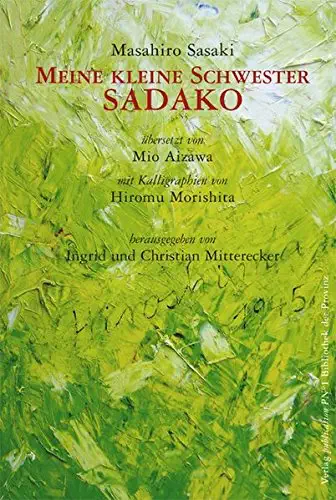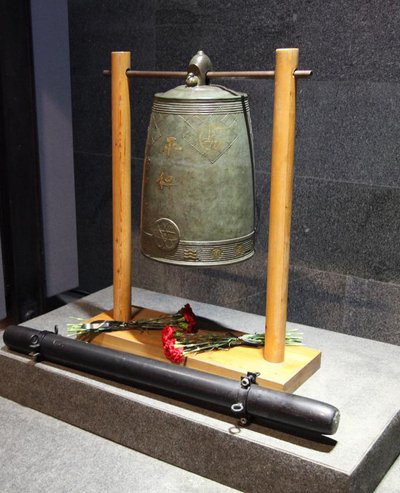Hiroshima and Nagasaki
On the 75th anniversary of nuclear horror
by Manuel García Fonseca, Spain
A few months ago a Japanese couple living in Hiroshima came to our home. They voluntarily accompany visitors to the museum and to the city centre, where one of the greatest atrocities of the 20th century took place. It was an experience to spend a few days with survivors of Hiroshima who show the horror and support the physical, but above all the moral regeneration of the inhabitants of Hiroshima. They do not forget, they inform, and they do this with serenity and a moral greatness that is catching. Peace should make it impossible for the horror to be repeated.
Each year on the anniversary, the events in Hiroshima and Nagasaki are commemorated, and emotional events are organised to commemorate the victims – as if everything had been an accident of history. In doing so, it is forgotten that it was a deliberate act committed with full knowledge of the damage it would cause and with absolute disregard for human suffering. The United States justified this monstrous act of terrorism by blaming the Japanese and presenting it as a necessary evil for a better future. However, neither the people who were in their homes were guilty, nor was a better world achieved; on the contrary, it brought terrible pain and unnecessary suffering to millions of people, and some of them are still suffering the consequences and dying from the late effects of radiation.
When I read and listen to the usual comments in the media, I find them so biased and unintelligible that I feel obliged to represent other, completely different views.
I was lucky to meet the American historian Gabriel Jackson on his visit to Gijón and hear him comment on one of his most interesting and best documented books: “Civilisation and Barbarity in 20th century Europe”. I thought his reflections on this terrible event were very important. They inspired me to take a very different view from the one prevailing today, which has been and still is held by the US Administration.
The first thing that stands out is that the media talk about the anniversary of Hiroshima, but barely mention that three days later the second atomic bomb was dropped on the civilian population of Nagasaki without giving the Japanese government even the slightest chance to reconsider its position in the face of such unprecedented atrocious actions.
For Jackson, the most barbaric acts of the century were those perpetrated by Nazism and Stalinism and the two atomic bombs dropped on cities. The cruel nuclear weapon was deliberately used against the civilian population in order to achieve the greatest possible effect, i.e. the greatest possible number of civilian deaths (today there are already more than two million people), in order to create the greatest possible terror. Jackson makes a detailed critical analysis of the various official justifications for this genocide and presents alternative options for a deterrent nuclear operation that could have been carried out without civilian casualties. The demand for the unconditional surrender which served as the American justification for the use of the nuclear bomb did not prevent the United States from finally accepting the main condition on which the Japanese had insisted: that the Emperor should not be forced to abdicate and that he should not be brought to justice as a war criminal. If this condition had been accepted beforehand, the Japanese government would have capitulated without the atomic bomb being dropped.
But to blame the American people for such a decision would be unfair and wrong. The American democracy, as Eisenhower himself warned, is dominated by the military industrial complex. I quote the impressive thoughts with which Jackson ends his analysis:
“To me, as an American serving as a military cartographer at the time, it seemed like a ‘war crime’, and in the (more than) half century since then I have never read a convincing explanation why a test could not be carried out in an uninhabited or sparsely populated area to save human lives, and not just those of American soldiers.
Under the specific circumstances of August 1945, the use of the atomic bomb showed that a psychologically very normal and democratically elected chief executive could use the weapon just as the Nazi dictator would have used it. In this way, the United States – for anyone concerned with moral distinctions in the conduct of different types of government – blurred the difference between fascism and democracy.”
A second observation on the central notions disseminated in official and ruling leading media is that of the threat to humanity from the possible use of nuclear weapons by other countries, especially those of the Third World. There is talk of the nuclear threat that assumes that Russia, Pakistan, India or above all North Korea or Iran are in possession of the nuclear weapon. The country that, irrespective of international agreements, is most likely to threaten the use of nuclear weapons, namely Israel, is often not mentioned. And nothing is said about the views and inclination of high-placed political and military officials in the United States to even use nuclear weapons as a deterrent. And above all, the government that deliberately and intentionally took the decision to commit the appalling genocide is not called to account, either legally or morally.
It is not enough to remember the victims; the executioners cannot be forgiven either, as long as they continue to justify what cannot be justified, as long as they do not ask the victims for forgiveness and acknowledge the horrible and unnecessary nature of their actions. For the future of humanity, justice and peace. •
(Translation Current Concerns)
The peace bell also sounds in Volgograd
Every year on 6 August in the Volgograd Panorama Museum “Battle of Stalingrad” a ceremony is held in memory of the civilians of the twin city Hiroshima who died in the atomic bombing of 1945. Today, on the 75th anniversary of one of the most terrible days in the history of mankind, the peace bell, which was presented to Volgograd by the city of Hiroshima, sounded again in the hero city. The event was attended by the chairman of the Volgograd City Duma Vladlen Kolesnikov and the chairman of the Volgograd Regional Department of the Russian Peace Foundation, honorary citizen of Volgograd and Hiroshima Yuri Starovatykh.
After the bell was struck three times at 8:15 a.m. – the time when the bomb was dropped on the Japanese city of Hiroshima on 6 August 1945 – the participants in the ceremony honored the memory of the victims of the atomic bombing with a minute of silence. Afterwards, fresh flowers were laid down at the foot of the bell.
“Seventy-five years ago, the atomic bomb on Hiroshima wiped out an entire city – with residential areas, families, the elderly and children. Stalingrad also experienced the full horror of war during the Second World War: our city became the scene of the most severe battle in the history of mankind and was destroyed to the ground. A tragic fate united Volgograd and Hiroshima and in 1972 became the basis for the signing of the Agreement on Friendship and Cooperation. Since then this friendship has not been interrupted, and one of the central streets of Volgograd is named after Hiroshima,” said Vladlen Kolesnikov, chairman of the Volgograd City Duma.
He emphasised that Volgograd and Hiroshima are united today by working for the good of the world. Volgograd holds the vice-presidency of the largest international organisation “Mayors for Peace” based in Hiroshima. One of the most important joint projects of cities in the field of peoples diplomacy is the International Youth Conference for a peaceful future.1 “Together with our partners from Hiroshima and other cities, we speak out against war and will always do so. We will do everything possible to ensure that new generations never have to experience tragedies like those of Hiroshima and Stalingrad. That is why the peace alarm is sounding again today in Volgograd,” said Yuri Starowatykh.
This year the memorial events on 6 August will be restricted worldwide due to the Corona pandemic. Therefore, no representatives from Hiroshima could participate in the commemoration ceremony in Volgograd. A video message was sent to the Japanese twin city instead.
On 6 and 9 August 1945, two atomic bombs were dropped on the Japanese cities of Hiroshima and Nagasaki. The explosion and the subsequent radioactive contamination of the area killed about 300,000 people. This was the first and last use of nuclear weapons in history. Ten years later, on 6 August 1955, the first world conference to ban nuclear weapons was held in Hiroshima; the city itself has become an eternal symbol of the struggle against weapons of mass destruction. Hiroshima Memorial Day is celebrated by the international community as World Day for the Prohibition of Nuclear Weapons. The world should remember the human tragedy and unite the efforts of the world communities to prevent wars at all. •
1 This year, young people from seven cities around the world came together in a video flash mob; they all had an origami crane folded out of paper as a sign of solidarity; according to Japanese culture, the wings of the crane carry souls to paradise. (note Current Concerns)
Source: www.volgsovet.ru/d1d0/Activity/PressRelease/i18126 from 6 August 2020
(Translation Current Concerns)
Victims of the atomic bomb (Poem of the mother)
On the morning of 6 August at 8:15 am.
There were four of us,
the four-year-old Masahiro,
the two-year-old Sadako,
Grandmother and me.
The air-raid warning was withdrawn at 7.30 am,
relieved we had settled down for breakfast.
A blinding flash.
The shock wave rattled the house,
the walls crashed down,
enormous clouds of dust in the room,
we could no longer see anything.
I called for my children.
Masahiro crawled from the dining table to me.
His head was covered in blood.
Where is Sadako?
Sadako couldn’t be seen.
Desperately I searched for her, followed her screaming voice.
Sadako simply was blown away,
dashed onto the coal box.
She sobbed convulsively, but was without a scratch.
In grandmother’s left hand, a chopstick was sticking.
Ah, we are all alive!*
Let’s flee! Hurry up, Grandma! We ran out of the house.
Outside, the whole town was burning,
I took the two children by the hands,
the sack on my shoulder,
and I ran with grandmother like crazy
on the levelled roofs
towards the Ota River.
We ran and ran,
dodging people,
people lying dead under the broken-down houses,
we avoided the glances of the people,
people who were burnt straying around with their skin hanging down.
The whole city on the run,
a sea of fire,
full of corpses and stench.
I wanted to swear that I was still alive.
Grandmother said she had forgotten something in the house.
The two children on her hands,
I couldn’t stop her.
She went back. The flames, higher and higher.
That was the last time I saw grandmother.
The three of us kept on running,
clinging to each other like mad.
At the Sanjo Bridge we met a friend,
he let us on his boat.
Immediately both banks were filled with people
looking for help
and with corpses.
He could not move the boat from the place.
And we had nothing else to do but wait
for the fire to die down.
While we were emptying the leaking boat,
black rain was pouring down at about ten o’clock.
The next day
we brought the white bones of the grandmother cremated.
Grandmother died in the pond in front of the house,
where she had sought shelter from the flames.
At the temple in Kabermachi
we were given my cousin’s legacy.
Due to the atomic bomb, twelve lives
were lost.
* Sadako died in 1955 of the atomic bomb disease – leukaemia.
(Translation Current Concerns)

